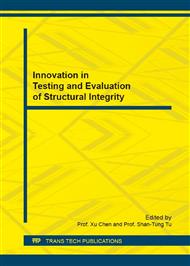p.256
p.262
p.266
p.272
p.276
p.281
p.286
p.291
p.296
Limit Load of Pressurized Cylinder-Nozzle Intersection Using Finite Element Method
Abstract:
Pressure vessel contained with different nozzles which caused geometric discontinuity of the pressure vessel wall, which resulted in stress concentration around the nozzle. There may be the chances of failure of vessel junction, which was attributed to the high stress concentration. Therefore, detail stress distribution analysis need to be done for pressure vessel with the nozzle. Determination of limit pressure at different location on lateral nozzle by using finite element method. Lateral nozzle was subjected to internal pressure and in-plane bending moment. Results found that plastic hinge occurred in the nozzle-vessel junction area shoulder. Plastic limit loading increased with the increasing of outside diameter and wall thickness of branch pipe when the size of primary piping was constant value, whereby the influence of outside diameter of branch pipe was more remarkable. Moreover, engineering estimation formulas of plastic limit in-plane bending moment was obtained based on plastic limit loading database.
Info:
Periodical:
Pages:
276-280
Citation:
Online since:
September 2016
Authors:
Price:
Сopyright:
© 2017 Trans Tech Publications Ltd. All Rights Reserved
Share:
Citation:


